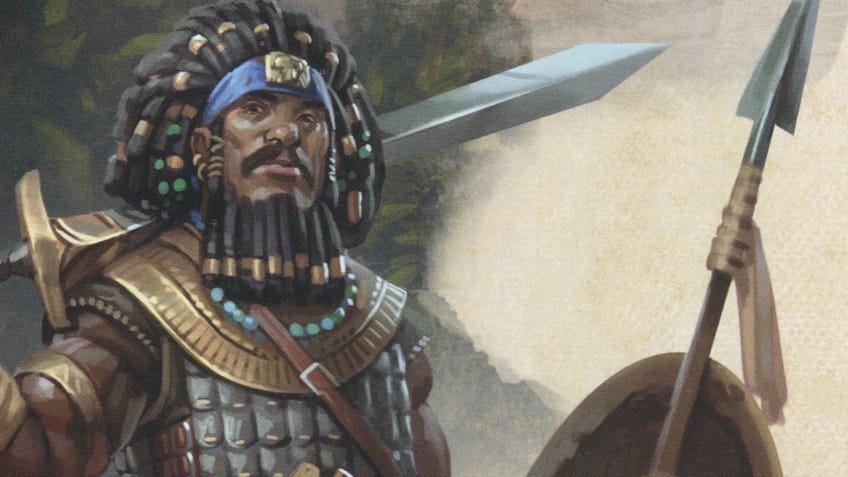Dungeons & Dragons 5E fighter class explained
Give yourself a fighting chance in D&D with our guide to what the fighter class can do, how you can create one and develop it further.
Every good team needs a weapon expert. The Teenage Mutant Ninja Turtles have Donatello, The Expendables have Hale Caesar and the world of Dungeons & Dragons 5E has the fighter class.
The fighter class in D&D 5E might not appear as glamorous as a sorcerer or a rogue (have a look at the full roster of classes in our guide to how to pick your character class in Dungeons & Dragons 5E), but they’re an incredibly valuable inclusion to any group and have a robust selection of class options to play around with.
- Deciding your Fighter skills and equipment: what is your character going to use?
- Choosing a fighting style and using Second Wind: what is your character’s main way of attacking? And how to use the Second Wind ability.
- What is Action Surge?: probably the most important Fighter ability.
- How do you use Action Surge?: how to use Action Surge as a Fighter.
- Choosing your fighter’s martial archetype: how each archetype differs and what you get with each level.
- The Champion archetype: an archetype that leans into physical strength and endurance.
- The Battle Master archetype: an archetype that leans into pure skill and knowledge.
- The Eldritch Knight archetype: an archetype that leans into casting spells.
- What D&D 5E race works best for a fighter?: how to choose the right character race in Dungeons & Dragons 5E.
You could choose to create an enormously hench Champion draped in heavy chainmail and swinging a solid iron morningstar. Or a Battle Master who’s educated in the arts of warfare, dancing around their opponents and capitalising on their weaknesses. Or how about creating an Eldritch Knight, who wields a throwing axe in one hand and casts deadly spells with the other?
Dungeons & Dragons 5E fighters can be so much more than just a person with a sword, and taking full advantage of the options available to you will open up a whole world of combat opportunities.
Let’s start by looking at what options you can choose from at level one.
Fighter skills and equipment
All level-one fighters get to choose two skills to gain proficiency in (from a select list). If you don’t know what proficiency is, you can read all about it in our guide to Dungeons & Dragons 5E character creation explained. If you do, then you can choose to acquire proficiency in acrobatics, animal handling, athletics, history, insight, intimidation, perception or survival.
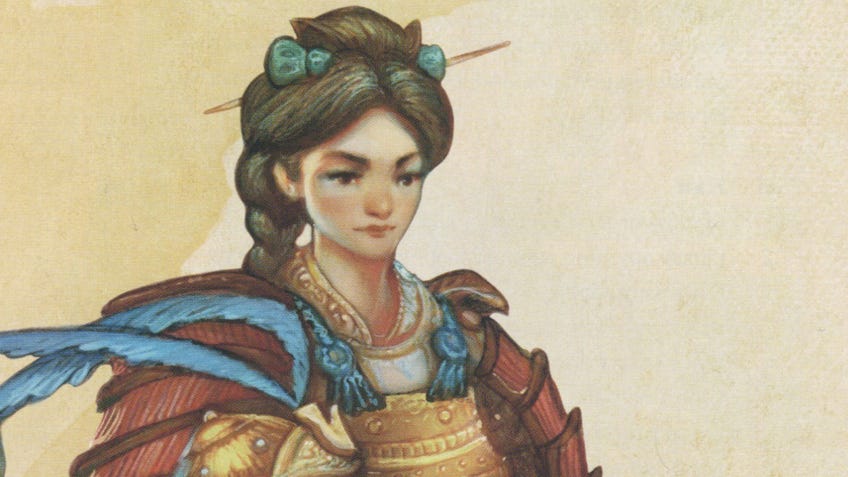
Deciding which of these skills will best suit your fighter, entirely depends on what kind of focus you want them to adopt. Take acrobatics and athletics, and you’ve got a fighter built to overcome all manner of physical challenges. Whereas if you choose to take perception and survival, then your fighter will be more adept at identifying and responding to potential threats in their environment.
Next, you’ve got your equipment. Fighters begin the game with more weapon and armour proficiencies than any other class in D&D. Not only are they proficient in all armour types, but they can use all simple and common weapons as well. Which means that you’ll get to choose from a wider variety of equipment sets, each one preparing your fighter to take a certain approach to combat.
Now, it’s a common misconception that fighters can only be melee-based characters, when in fact, players have a wide array of weaponry to choose from, including longbows and crossbows. In fact, one of the equipment sets you get includes a longbow with 20 arrows, so the option to be ranged is most definitely open to you.
You will have to choose (a) or (b) from each set shown on page 72 of the D&D 5E Player’s Handbook, but even accounting for this choice, you’ll still be receiving an absolutely huge amount of equipment at level one. Your choices will likely be influenced by the kind of weaponry and armour combinations you want to lean into. For example, if you’re interested in duel-wielding in a heavy raiment, then you might take the chainmail over the leather armour and the two hand axes over the light crossbow. Additionally, if you ever feel like you’re having to make a Sophie’s Choice at any point, there’s no need to fret, as there will be plenty of opportunities to get your hands on other weapons and armour in the future.
Choosing a fighting style and using Second Wind
Now that you’ve got your skills and your stuff, you can finally think about which of the available fighting styles most appeals to you. This will likely come back to the general image you have of your fighter - do they clunk about holding up a big ol’ shield? Are they slicing the air with a massive longsword or prodding at enemies with sharp little rapier? Or perhaps they prefer picking off opponents with arrows fired from afar.
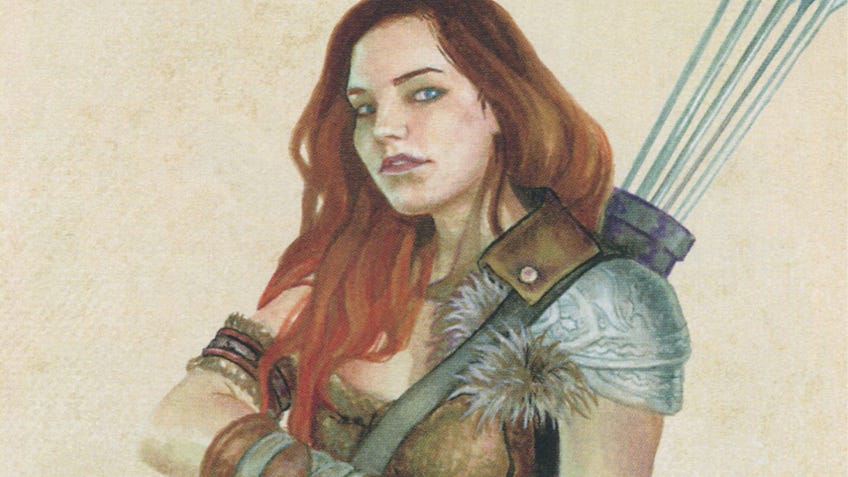
There is a fighting style to suit each one of these images, with some matching more specific approaches than others. For example, the archery fighting style gives you a +2 bonus to attack rolls made with any ranged weapon - you can learn how to make an attack roll in our guide to the basics of Dungeons & Dragons. Whereas something like the protection style leans more in the general direction of supporting your fellow party members. Either way, whatever fighting style you pick will provide a vague sort of path for your character to follow.
The final thing you get at level one is the Second Wind ability, which enables your fighter to use a bonus action on their turn to gain back some hit points (if you’re not sure what counts as a bonus action, then have a read of our guide to Dungeons & Dragons 5E key terms explained.) The number of hit points you heal depends on what you roll plus whatever your level is at the time, so this ability will gradually get better. Nevertheless, being able to potentially heal 11 hit points from first level is undeniably powerful, especially for a class that doesn’t traditionally cast spells.
What is Action Surge?
Action Surge is one of the defining traits of the fighter class. You’ll gain access to the action surge ability from second level, but you won’t see any noticeable improvement to the ability until level 17.
With Action Surge, your fighter will be able to perform two major actions per turn, instead of just the standard one. You’ll also get to use your bonus action alongside this additional main action, meaning that you could potentially move, attack twice, and cast a spell in the space of a single turn.
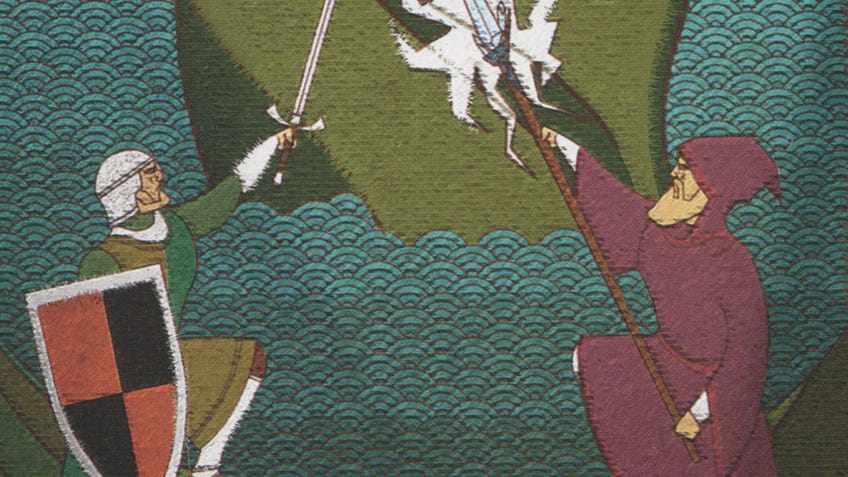
How do you use Action Surge?
Action Surge is an ability your fighter can use during your turn within a round of combat. You can decide to use it after performing your first action and bonus action, just as long as it happens during your turn.
We want to reiterate that action surge enables ANY major action to be performed, including another attack. This also means that any abilities or feats that enable you to do more than one attack per turn, such as the Extra Attack ability you gain at fifth level, can be used in conjunction with action surge. Essentially, if you’ve just taken an attack that allows for multiple hits, you can still use action surge to perform another attack.
Once Action Surge is used, you will have to undergo a short or long rest before being able to use it again (at least until level 17). Confused about resting? Have the key Dungeons & Dragons 5E terms explained to you [link] in order to tell the difference between the two.
This may seem incredibly powerful, but remember that fighters are primarily built for combat, with their abilities and feats designed to make them as formidable an opponent as possible.
Choosing your fighter’s martial archetype
When third level finally rolls around, you’ll be able to specialise your fighter even more by selecting their chosen martial archetype.
Martial archetypes are like bulkier fighting styles, gifting you greater abilities and feats, and further shaping your character’s talents in powerful directions. You’ll be able to choose from three different types of Martial Archetypes included in the D&D 5E Player’s Handbook, with even more archetypes made available across Wizards of the Coast’s other source books for Dungeons & Dragons 5E such as Xanathar’s Guide to Everything various homebrew sites.
However, for this guide we’re going to focus on covering the three archetypes featured in the D&D 5E Player Handbook, as they’re far more accessible and straightforward than the others. Also, we simply don’t have time to cover every weird and wacky bit of D&D content out there, so we’re prioritising the important parts.
Each of the Champion, Battle Master and Eldritch Knight fighter archetypes provide the three core flavours of the fighter class; the vanilla, the strawberry and the chocolate of this particular D&D neapolitan, if you will.
The Champion archetype
The Champion archetype is for players who want to indulge their more gladiatorial side, crafting a powerfully hewn bag of muscles to throw at enemy compatents. Their progression is laser-focused on creating the most offensively viable character possible, with increases to their physical proficiencies and critical hit chance. To elaborate further, a Champion fighter will receive two improvements to their critical hit chance leading up to level 20, which essentially means that you have more opportunities to dole out critical hits because you have better odds of rolling them.
Beyond this, you’ll also be able to add a proficiency bonus to all checks related to strength, dexterity or constitution that you otherwise lack proficiency in, thereby creating an all-round specimen of physical perfection (and generally aiding you in successfully passing more ability checks, which you can calculate using our guide to Dungeons & Dragons 5E character creation explained.) Eventually you hit the Survivor feat at level 18, which allows you to use your constitution modifier to heal yourself every turn. Combine the survivor feat with all the ability score increases you can expect to get leading up to level 18, and you could eventually put enough points into your constitution to give your fighter near immortality.
The Battle Master archetype
The Battle Master archetype offers fighters an impressive toolkit of attacks to reach into and dig out during the heat of battle. Whilst the feats you gain won’t be quite as universally as effective as the Champion’s, they will make your fighter into a Swiss Army knife of smashing, slashing and crunching. Which lets face it, sounds pretty great.

Choosing the Battle Master archetype will grant you access to manoeuvres, which are attacks with unique effects ranging from disarming opponents to healing your allies. Manoeuvres can be used in place of a standard attack, and require a fighter to expend one of their initial pool of four superiority dice. At third level, you’ll be able to choose three of these manoeuvres from the list provided in the Dungeons & Dragons 5E Player’s Handbook, with opportunities to learn a further six as you continue to level up. Superiority dice don’t only serve as currency with which to perform manoeuvres, but also act as an additional source of damage, which is why the jump from using d8s to eventually using d12s feels so enormous.
At level seven, you’ll also be able to gain useful information about creatures outside of battle, including their ability scores, by asking the DM. Using the Know Your Enemy ability can give your party a heads-up on any potential enemy weaknesses.
The Eldritch Knight archetype
The Eldritch Knight archetype is an excellent go-between for players who like the idea of controlling a spellcaster, but don’t want to deal with the hassle of juggling an enormous spell list. The Eldritch Knight has access to just two key schools of magic, Abjuration and Evocation, which, when broken-down into normal English, translate as nice helpful magic for your allies (Abjuration) and nasty hurtful magic for your enemies (Evocation). These particular areas of D&D are usually the playgrounds of wizards (more on that in our Dungeons & Dragons 5E wizard class explained guide); however, by creating an Eldritch Knight you get to select two cantrips and two first level spells from either of these schools.
As you level-up, you’ll be able to give your Eldritch Knight even more spells, including one you gain automatically at level 15 that allows you to warp across the battlefield. Level increases also open up new opportunities to make additional attacks (with War Magic) and to further weaken your opponents (with Eldritch Strike). Combining both offensive and supportive spells with the ability to hit-things-real-good, makes the Eldritch Knight one very formidable fighter indeed.
What D&D 5E race works best for a fighter?
The question of what race to choose when making a fighter has been somewhat touched upon in our guide to how to choose the right character race in Dungeons & Dragons 5E, which you can read if you’re unsure as to what race to play in general. But we thought it’d be a fine idea to cover the topic in greater detail here as well.
Dwarves are able to wear any type of armour without having their speed reduced, thanks to their decidedly solid structure and general hardiness. This is a really useful trait to have if you intend to make a fighter, as it gives them the potential to adopt almost any combination of armour and weaponry whilst on the battlefield. They also get an increase to constitution which, when combined with talents like Survivor, can be a recipe for a really resilient fighter.
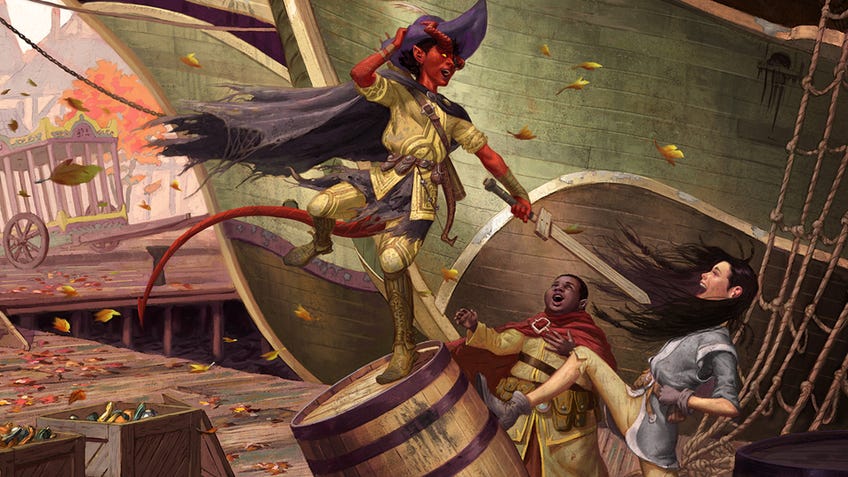
Dragonborns are also a hardy-bunch, benefitting from select damage resistances and starting with an automatic increase to their strength ability score. They also gain the use of a unique breath weapon, which can be a nice little addition to a fighter’s arsenal.
Half-orcs are equally, if not more, sturdy than dragonborns, considering they receive increases to both their strength and constitution ability scores from the off. What’s more, half-orcs also get the Relentless Endurance trait, which allows them to take damage without hitting zero hit points (at least the first time it could happen). To top it all off, if a half-orc successfully scores a critical hit on an enemy, then they get to apply extra damage to their attack.
These are just from the selection of standard races provided in the Dungeons & Dragons 5E Player’s Handbook, there are plenty more options available in Wizards of the Coast other D&D resources or in the myriad of homebrew content out there.
When it comes to creating and developing your fighter, this is the bulk of what you need to know. But if reading this guide has made you realise that perhaps the fighter isn’t the right class for your D&D character, looking at our guide to How to pick your character class in Dungeons & Dragons 5E may give you a push in the right direction. Perhaps you'd rather be a sneaky rogue - in that case have a read of our Dungeons & Dragons 5E rogue class explained guide - or a tricky warlock, which you can create using our Dungeons & Dragons 5E Warlock class explained guide.
